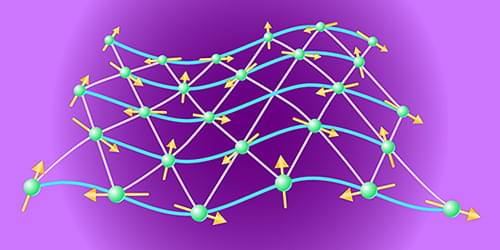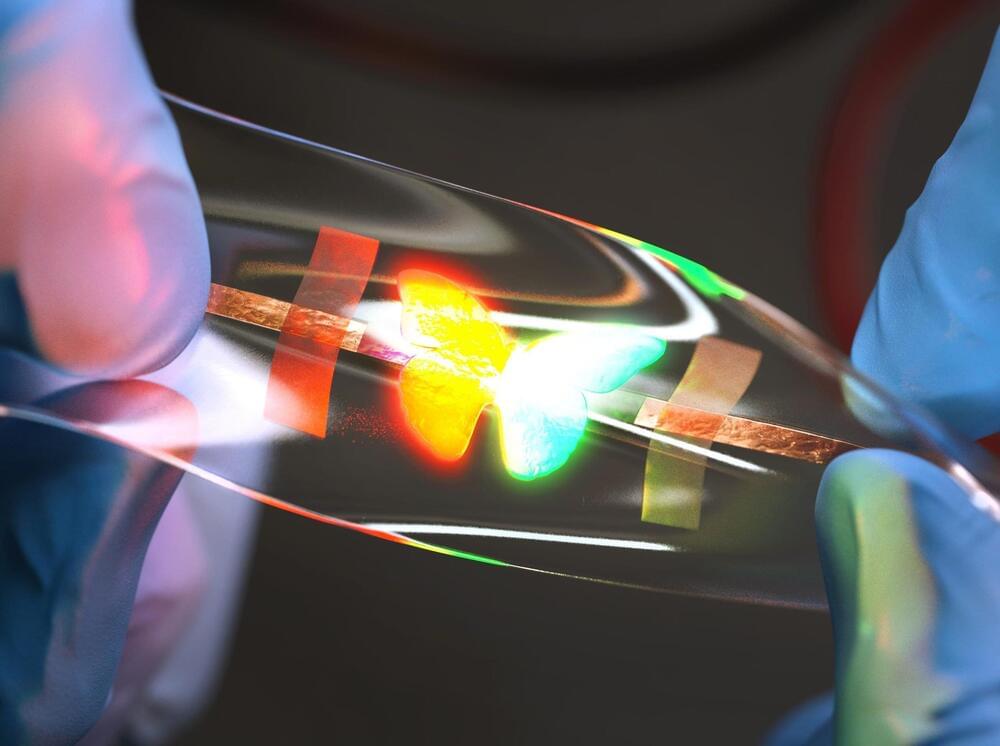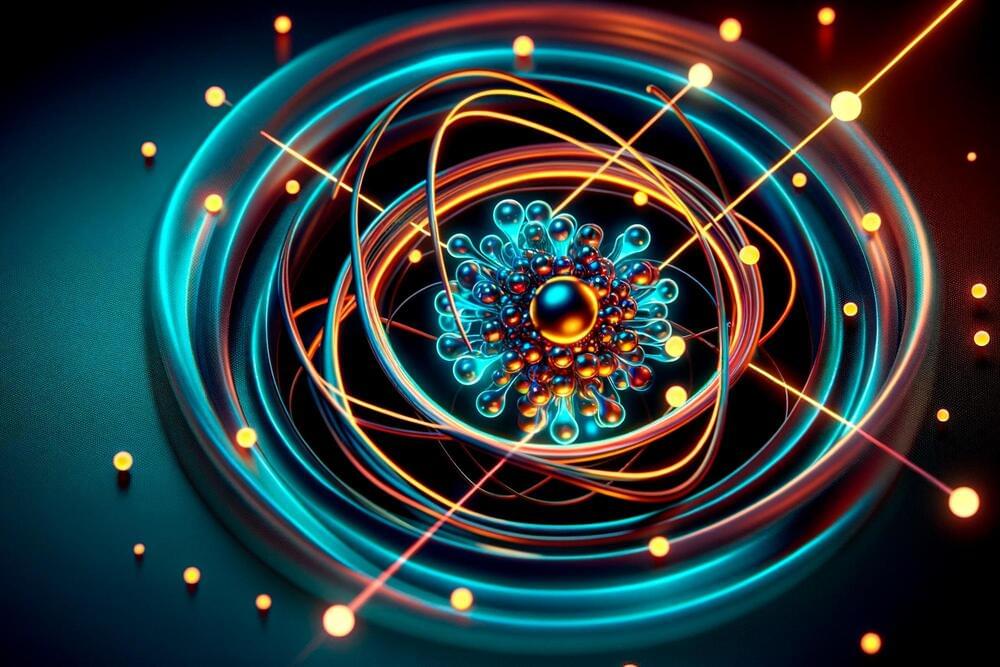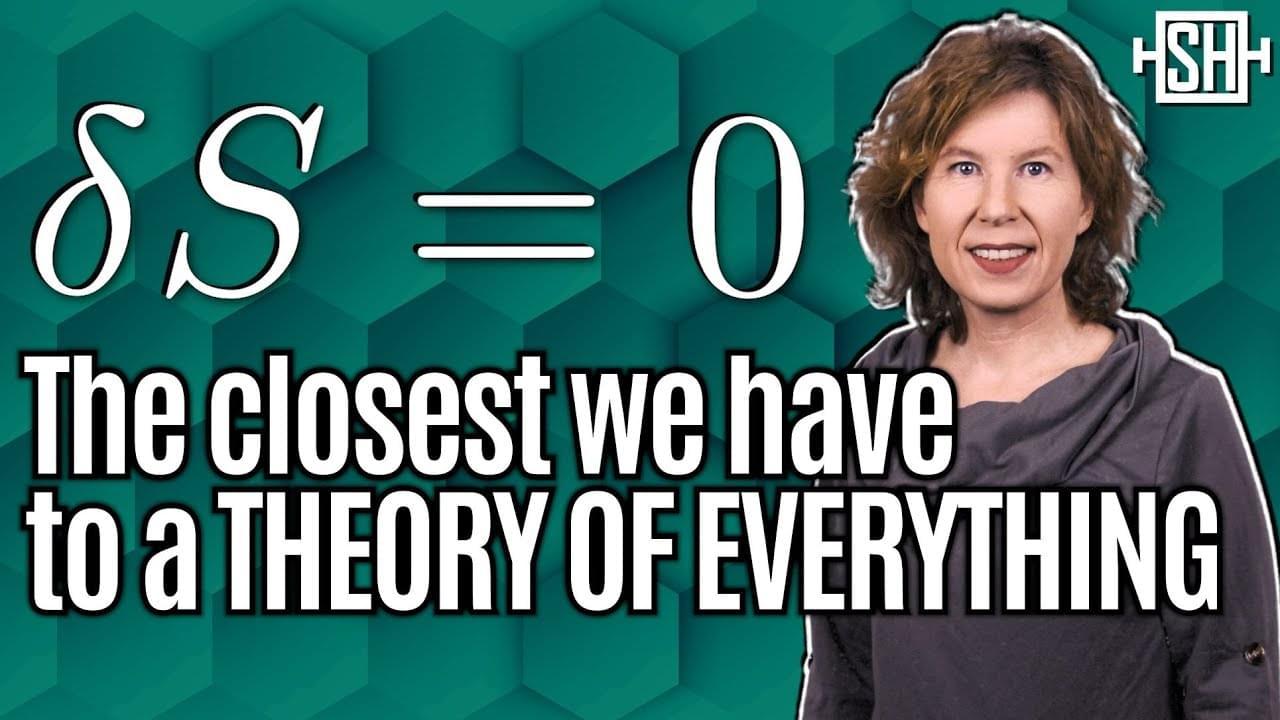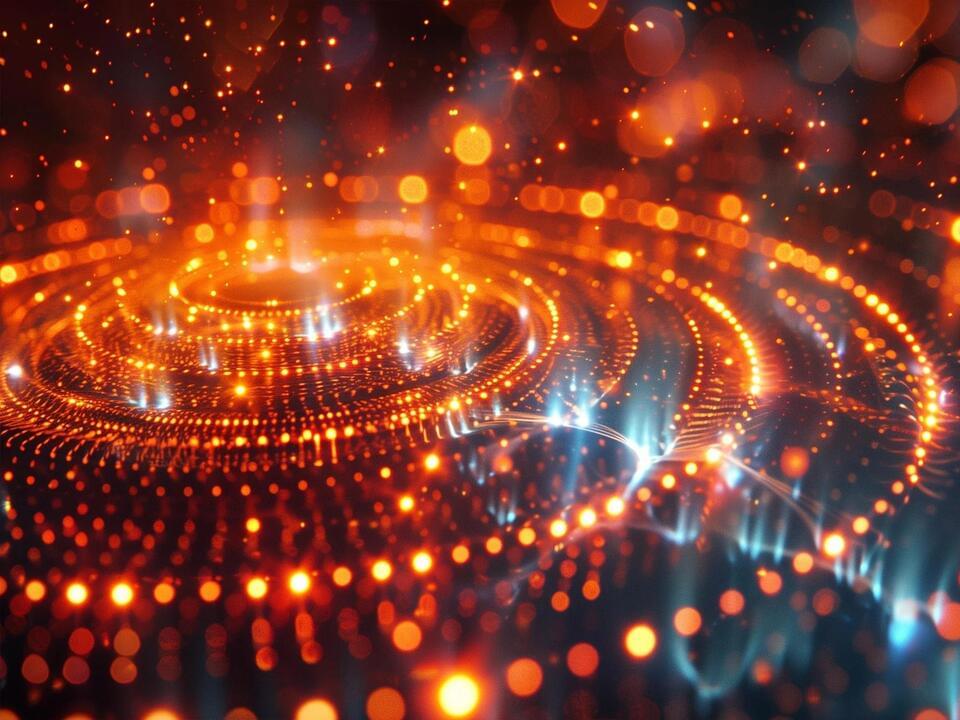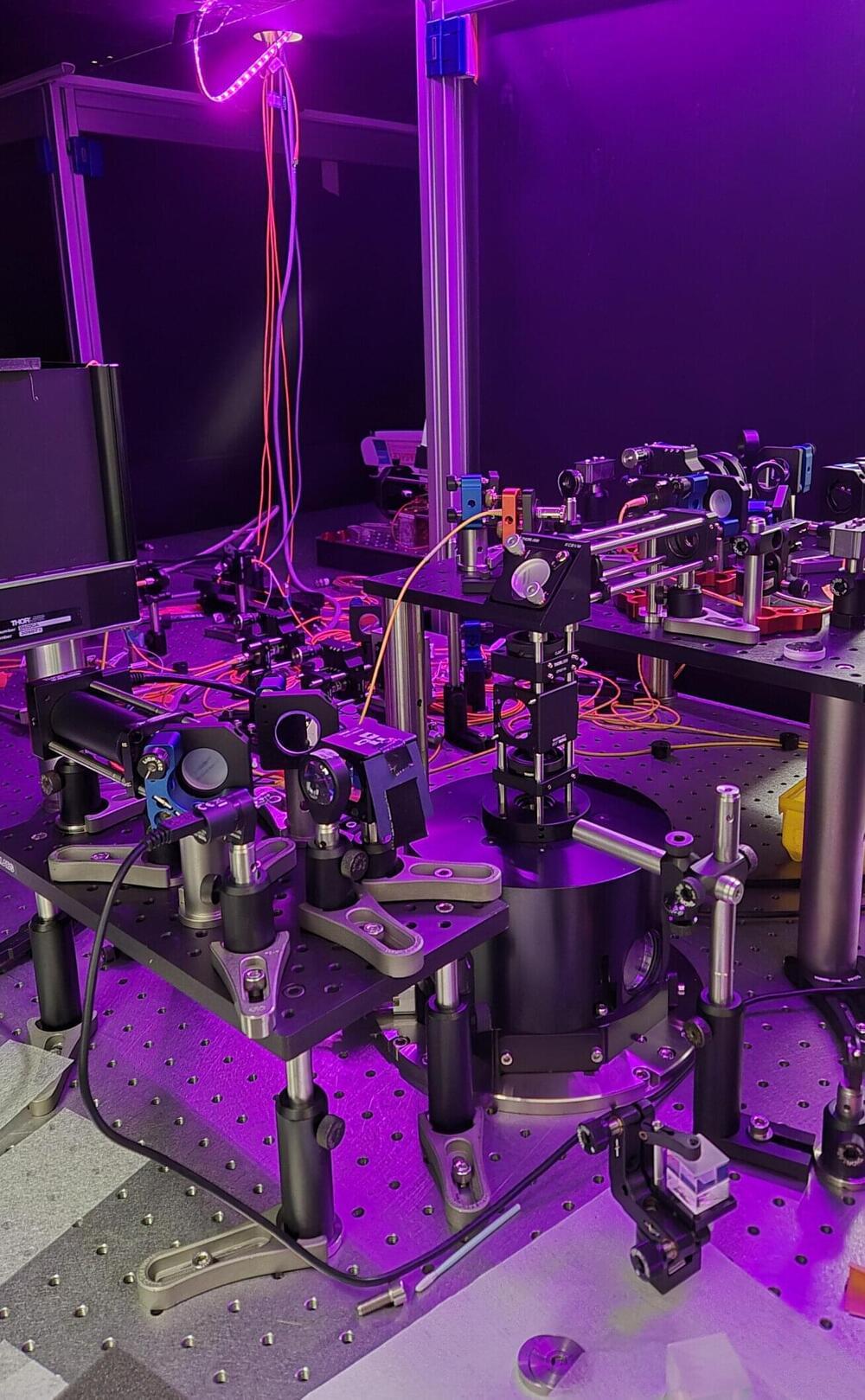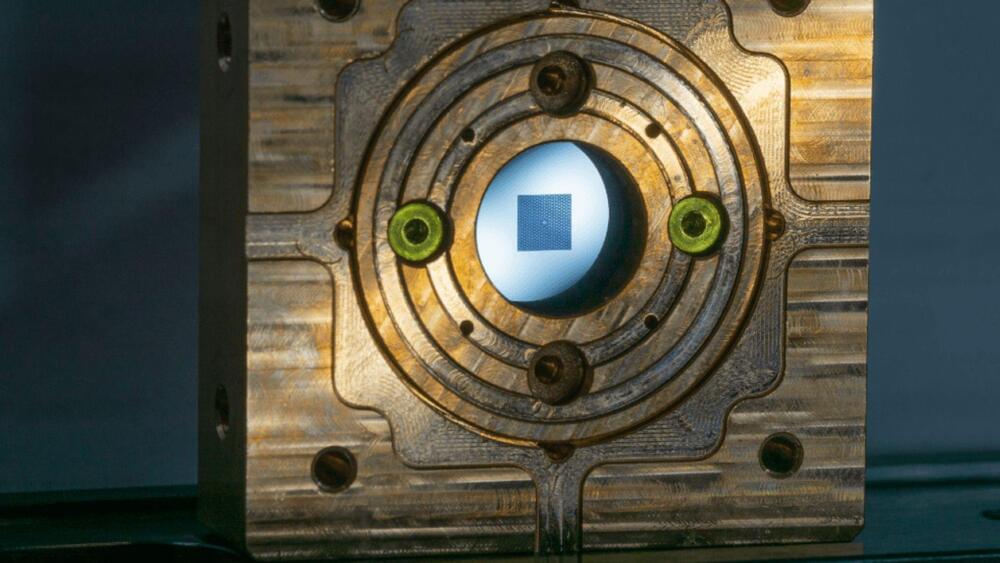Apr 17, 2024
Viewing a Quantum Spin Liquid through QED
Posted by Saúl Morales Rodriguéz in categories: particle physics, quantum physics
A numerical investigation has revealed a surprising correspondence between a lattice spin model and a quantum field theory.
The search for a quantum spin liquid (QSL) in a real magnetic material has been at the forefront of condensed-matter physics since this exotic quantum state was first proposed over half a century ago. Meanwhile, theorists continue to grapple with understanding what rich physics might emerge from this state. Now Alexander Wietek of the Max Planck Institute for the Physics of Complex Systems in Germany and his collaborators have made a significant advance toward that goal. Through numerical simulations, they have presented a compelling numerical case that the spectrum of elementary excitations of a well-studied QSL has a one-to-one correspondence with the spectrum of excitations of a well-studied quantum field theory [1]. If a real QSL is discovered or fabricated, the correspondence opens the prospect of testing theories from particle physics with condensed-matter systems.
